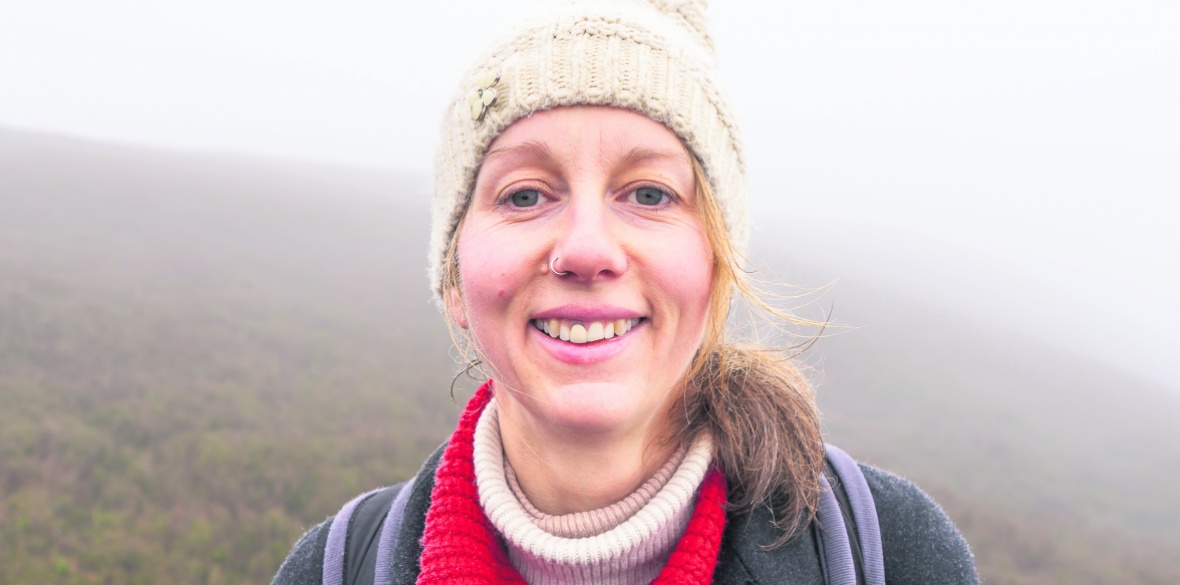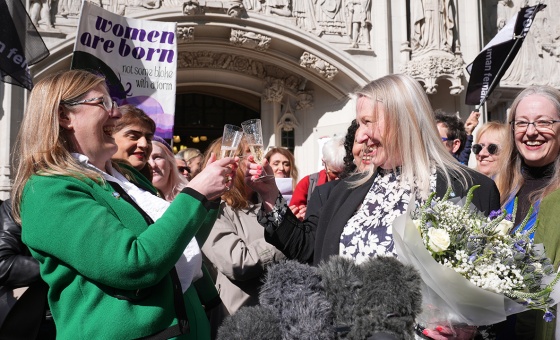This is the last article you can read this month
You can read more article this month
You can read more articles this month
Sorry your limit is up for this month
Reset on:
Please help support the Morning Star by subscribing here
Richard House (RH): Can you say something about how your previous activist work might have prepared you for, and helped lay a favourable foundation for, the phenomenal success of XR to date?
Gail Bradbrook (GB): I struggle with your word “success” because we haven’t achieved our goals and we have quite a way to go and time is so short. There are so many of us motivated to try, though, to give it our best shot.
What previous work has done has, of course, taught me a lot. And mostly through failures — many of them! I’ve tried quite a few approaches to social change, got really hopeful that something might be a very effective cause to pursue — and then found out that it wasn’t!
I think one of the best things I learned was from Roger Hallam, which is to be very careful in thinking about your theory of change, to learn from others about what works and to be systematic in applying techniques and practices.
I hope I’ve also learned a lot about working with other people. I’m at my happiest when I’m in a team with other people who are just as dedicated and driven.
Many of us behind Extinction Rebellion worked together on Rising Up projects. We fell in love with each other, got annoyed with each other, worked out our strengths and weaknesses, and kept trying because — well, it just seems to be in our blood.
RH: Can you tell us a bit more about Roger Hallam’s background, and how that has effectively fed into XR’s work? And can you summarise for readers what you’ve distilled from your researches into the necessary and sufficient conditions for sustainable social change to happen?
GB: Roger has been doing research at King’s College London into social change, and he is also an organic veg farmer. He was involved in setting up things like the Radical Think Tank and Radical Routes, and has spent his life thinking about how societies change. He’s a phenomenal energy; I sometimes call him our engine room — it’s meant as a compliment!
Roger was doing research into conditional commitment, which is the idea that people might do something if they knew others might, too. He used this approach to help organise a successful rent strike at University College London, for instance.
He’s basically interested, as I understand it, in how to design winning campaigns, and he draws upon a whole range of sources for tactics and inspiration.
For example, a “dilemma action” is an action where you have thought about possible outcomes, and any one of them constitutes a win. I’ll give you an example.
In the “Toxic bankers” campaign, we stood outside Barclays Bank and spray-chalked slogans on their windows. It was related to their investment in fracking, which they later said they would pull out of. The spray chalk washes off, and we had tea, cakes and friendly explanatory letters for the staff.
So the police duly arrive, and you show them that the slogans wash off and that you’re doing a peaceful protest.
If they arrest you — which you’ve decided beforehand that you don’t mind happening — you create a story for the press/media, and the court process gives you opportunities to highlight your concerns.
If the police come and let you have your protest, you still get a story, you feel quite victorious standing there shining a light on bad behaviour by this bank — and others think it’s fun and are inspired to copy.
So the bank and police are in a dilemma about what to do, and how to respond. The book This Is An Uprising has other really cool examples.
Another thing that happened is that I got some training from Carlos Saavedra at the Ayni Institute in how to do what’s called “momentum-driven organising.”
This involves growing your movement by creating things that people can copy (if they agree to/with your principles and values), and then training people how to get involved and how to train other people.
You make sure people feel empowered to act without needing permission. In that way, things can spread rapidly.
RH: I have a strong sense of the thinking and research that underpins XR’s activities providing new ways for all left-green activists to think about direct action, and what configurations and philosophies of activism are most likely to bring about the change we all yearn for.
To throw some light on this, can we finish with your take on what most distinguishes XR’s whole approach from other activisms, for example around non-violence as a core principle — what have been the movement’s greatest challenges to date and how you see XR’s future campaigning unfolding?
GB: I think XR hit a zeitgeist and built on many lessons from other movements, so there isn’t one thing as such, but the bringing together of many tactics and methods.
Encouraging emotion, including grief, has been central, using “emergency-mode” messaging and decentralised organising as best we have been able to figure it — all of this has helped.
It’s very challenging right now because our systems and processes are creaking, and we need to move forwards from a place of deep imperfection, with various conflicts that need hearing and healing to the extent we’re able.
I think our biggest challenge in the parts of the environmental movement that are dominated by privileged white folks, like XR, is to figure out both how to connect to the grief and fears we feel more immediately, while recognising that this is nothing new for so many parts of the world.
We are largely disconnected, and reweaving our human family and our relationship to the natural world requires us to stop harming each other and start making repairs. But we do that from this broken starting place, with no clear road map.
We need to follow our hearts and find our courage — get back on the streets and, in my opinion, build towards a mass refusal to pay rents and debts.
Dr Gail Bradbrook has been researching, planning and training for mass civil disobedience since 2010. The social movement Extinction Rebellion (XR) which she co-founded has rapidly spread internationally since its launch in October 2018, with 350 XR groups in 50 countries. Trained in molecular biophysics, Bradbrook’s talk on the science of the ecological crisis, the psychology of active participation and the need for civil disobedience has gone viral. Richard House is a Corbynista activist and writer in Stroud.











